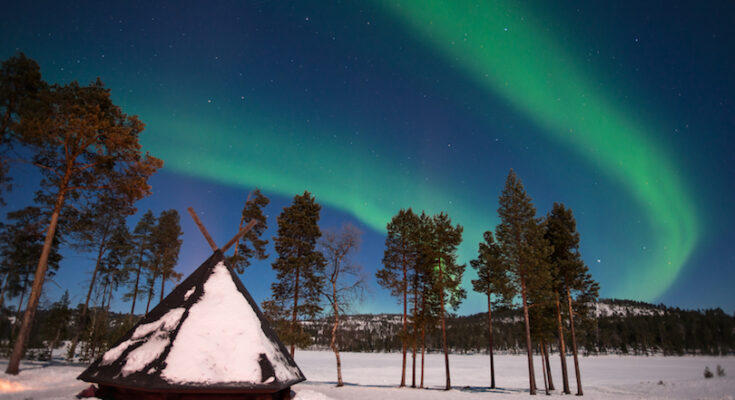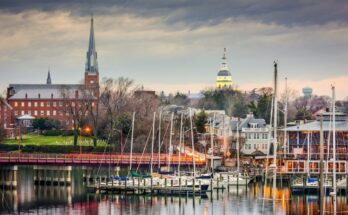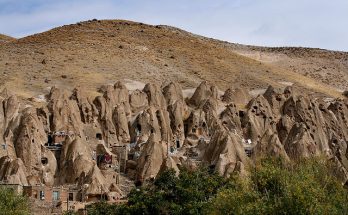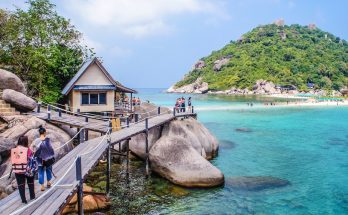Northern Europe may be known as a place of Vikings and snow – and to some extent, that’s not incorrect. The Viking Age definitely did help to shape the culture of Scandinavia, and yes; there is a lot of snow, too. But it’s much more refined, and much more beautiful, than you could imagine.
From the storied, colorful old towns of some of the region’s richest trading cities to museums stressing the importance of the ancient Vikings, history comes to life in Northern Europe. Then there are far-flung islands where the sun never sets in summer, magnificent fjords and lakes as far as the eye can see. One thing is for sure; Northern Europe is modest about its majesty.
17. Malmo
The third-largest city in all of Sweden, Malmo is something of a crossroads. With mainland Europe a quick ferry-crossing away, there are over 150 different nationalities in Malmo. Think a creative, international mix of Italian cafes, markets straight out of the Middle East, and fashionable bars.
Away from the modern-day melange of Malmo is Gamla Staden – or the Old Town – which comes complete with handsome Dutch Renaissance buildings. Malmo’s famous waterfront area was designed by architect Vastra Hamnen and is home to sky-piercing buildings that loom over Oresund Bridge for a fascinating mix of old and new that Malmo has become known for.
16. Reykjavik

The compact Icelandic capital of Reykjavik is the ideal coastal city to base yourself for an adventure in this snowy, glacier-strewn land. Learn about the culture of this intriguing country – namely, Vikings – from the many museums on offer, like the National and Saga Museum.
One of the more famous sights in town is the stunning Hallgrimskirkja Church, a soaring modern marvel of a religious building; there’s a rotating glass dome from which you can catch views out across the sea. It may seem quaint in the day, but at night, things hot up, with plenty of clubs and busy bars around its central district.
15. Bergen

Bergen sits on the southwest coast of Norway, encased in mountains and flanked by fjords. In fact, the most famous fjord in Norway, Sognefjord (also its deepest and longest), is situated nearby. The charm of the city lies in Old Bergan, with its whimsical, wooden-built houses all painted in bright block colors; take a walk along the waterfront wharf area and end up at the port with its busy fish market.
The Fløibanen funicular in Bergen takes you up to the top of Fløyen Mountain for scenic views of the surrounding nature, in which hiking is not only a possibility, it’s a national pastime come summer.
14. Finnish Lakeland

Finnish Lakeland is a region in the east of Finland where, true to its name, you will find almost countless lakes; around 40 lakes per 100 square kilometers. The largest of these is Lake Saimaa, which is not only Finland’s biggest lake, but also the fourth-largest natural lake in the whole of Europe. Studding Saimaa like little jewels are its 5,484 islands.
After spending time in an oak-burning sauna, a cooling dip in a lake is the best thing to do. The water of the lake is beautifully clean and reflects the sky for even more charm. Take a steamboat or canoe around the waters, spotting quaint mökki (summer cottages).
13. Gotland

Just off the southeastern coast of Sweden is its largest island, Gotland. Also the largest island in the Baltic Sea, it’s a stunningly scenic and serene spot, where very few people actually live. The capital, Visby, is a historic center surrounded by well-preserved old city walls, that tells of the island’s Viking and medieval history.
There’s actually a fun festival held every year where Gotlanders don their best medieval garb and take a step back in time with music and merriment. Nature-wise, the island is asking to be explored. You could even just take a drive along the coast for dramatic sea views, little-visited hamlets tucked away, carpets of flowers in summer, and sandy beaches.
12. Jotunheimen National Park

Part of the Scandinavian Mountain range, Jotunheimen (“Home of the Giants”) is a collection of mountains in Norway that boasts 29 of the country’s tallest peaks. Around a third of the mountains are contained within the Jotunheimen National Park. The area is a very popular spot for anybody looking for adventures on mountainsides – namely hikers and climbers.
In winter, the slopes are covered in pure-white powder, while in the summer, Jotunheimen is all about grassy valleys and gleaming rivers – and skiing, thanks to the summer ski center. There are many mountain lodges where you can stay the night along the 300 kilometers of marked paths.
11. Faroe Islands
 © Miroslav Liska / Dreamstime
© Miroslav Liska / DreamstimeSet in the North Atlantic Ocean around 200 miles from the coast of Scotland, the Faroe Islands (part of the Kingdom of Denmark) are made up of 18 craggy, volcanic islets and islands. Its capital of Torshavn, located on the island of Streymoy, is where around 40% of the population of this self-governing territory live.
Many of the islands are connected by tunnels, bridges, causeways, and ferry crossings. It’s a popular spot for bird watchers especially, who enjoy observing the many species of seabird that live there, such as puffins, fulmars, kittiwakes, and guillemots. The iconic grass-roofed buildings of the Faroes are a sight that must be seen.
10. Blue Lagoon

The hot spring that is Blue Lagoon is an extremely popular spot. Set on the Reykjanes Peninsula, not all that far from the Icelandic capital, the turquoise waters almost seem to glow like a gem amid the black volcanic rocks surrounding it.
The Blue Lagoon boasts 39°C water temperatures all year round, as well as healing properties (due to high silica and salt content of the volcanic water). Not naturally formed, it was first established in the 1970s as part of the cooling system for the local geothermal power plant; people started bathing here in the ‘80s, and it has since attracted people the world over.
9. Copenhagen

Copenhagen is the capital of Denmark and is situated on the coastal islands Zeeland and Amager. The city is strewn with historical sights and beautiful buildings, such as in the district of Frederiksstaden, where you’ll find ornate Rococo-style architecture dating back to the 18th century.
This area is also home to the Amalienborg Palace, the seat of the Danish royal family, as well as the impressive Frederik’s Kirke – fittingly known as the Marble Church. The iconic Nyhavn area is home to 17th-century buildings, canals, and plenty of drinking and dining options – as well as attractive heritage lodgings.
Tivoli Gardens, a 19th-century amusement park, is where you’ll find Rutschebanen – one of the oldest wooden roller coasters in the world!
8. Helsinki

Set on the south coast of Finland, Helsinki is the smart Finnish capital, and home to some stunning architecture. From the main railway station – with its unique National Romantic style and the imposing, stripped-back Parliament House – to the incredible Temppeliaukion Church – a bold 1960s church set directly in excavated rock – there’s an intriguing cross-section of modern styles in this city.
You can head over to the National Museum to learn all about Finnish history, or – from spring to autumn – check out Market Square, a hive of activity with food stalls, souvenirs, and street-side cafes where you can simply watch life in the capital unfold.
7. Svalbard

Far, far north from the Norwegian mainland is the island archipelago of Svalbard. Set well into the Arctic Circle, this far-flung destination is the place to come to witness the phenomenon that is Midnight Sun; during the summer, the sun doesn’t set here, never properly falling below the horizon for 24 hours.
Unfortunately, the opposite is also true of winter, when the sun never rises! Not part of Norway until 1925, today, visiting Svalbard is relatively easy, thanks to a surprising number of lodgings. This makes it easy to spot everything from polar bears and Arctic foxes to the magical Northern Lights.
6. Gullfoss

In southwest Iceland lies the startling natural wonder that is Gullfoss. Meaning “Golden Falls” in Icelandic, this waterfall is anything but ordinary. The Hvítá River, originating at the Langjökull glacier, runs its course through a canyon and then suddenly turns at a sharp angle to plunge 32 meters down its two stages before continuing.
The sheer power of nature here is easy to see; visit in summer for the full effect, when 140 cubic meters tumble down the falls every second. With more to see in the local area – like the hot springs of Geysir or the active geyser of Strokkur – as well as a few hotels nearby, staying at Gullfoss to explore further is a good idea.
5. Stockholm

Stockholm is a city of islands. Set on a Baltic Sea archipelago of 14 islands linked by a series of 50 bridges, the Swedish capital is a must-visit destination in the country. There’s Gamla Stan – or Old Town – a network of cobblestone lanes and pastel-colored houses, home to the 13th century Storkyrkan Cathedral.
Elsewhere in Stockholm, you can find the grand Royal Palace (completed in 1760), the Romanesque Revival style Stockholm City Hall. You can learn about the Nobel Prize at the Nobel Museum, and see an intact 17th-century sailship at the Vasa Museum. The open-air museum Skansen is an excellent way to glimpse Swedish life before modern-day luxuries.
See also: Where to Stay in Stockholm
4. Lofoten Islands

An archipelago extending from the northeast coast of Norway, Lofoten provides some truly dramatic natural backdrops for your travel adventures. One of the most famous things about Lofoten, besides its beautifully scenic setting, is its climate: it’s known for being strangely warm for its latitude.
Back to the nature now; keen rock climbers and mountaineers should make a beeline for Moskenesøya, while cyclists can enjoy a well-marked and particularly stunning cycle path from southerly Å, which goes on past Fiskebøl in the north. Otherwise, Lofoten is a warren of charming fishing villages with breathtaking natural surroundings, like Nusfjord on Flakstadøya.
3. Lapland
 © Delstudio / Dreamstime
© Delstudio / DreamstimeExcept for the North Pole, there’s nowhere more northerly that’s as famous as this place. Lapland is a place for big kids and little kids alike; call him what you like – Father Christmas, Santa Claus, Saint Nicholas – this is his “traditional” home. Head to Rovaniemi to see if you can find his workshop.
Otherwise, Lapland – straddling the northern reaches of both Sweden and Finland – is the home of another traditional resident, the Sami people. Also known as Sápmi, Lapland is home to the original Ice Hotel, skiing opportunities, and chances to glimpse the Northern Lights. Head further north to discover the reindeer-herding Sami people themselves.
2. Vatnajokull National Park

Vatnajokull National Park is the result of merging two extant Icelandic national parks, Jökulsárgljúfur and Skaftafell, with the giant ice cap that is Vatnajokull itself. As such, there are some incredible natural sights to see here. One of the most spectacular has to be Dettifoss; this waterfall is said to be Europe’s most powerful. Witnessing the water of the wide Jökulsá á Fjöllum falling an impressive 44 meters from one of the many hiking trails is awe-inspiring.
Elsewhere, there’s the caldera of Askja, where you’ll find the turquoise geothermal lake of Víti. Simply driving the ring road of this national park is an excellent way to watch nature unfold.
1. Fjords of Norway

Norway is famous for its glacier-formed, U-shaped valleys that everybody knows and loves as fjords. Sognefjord may be its longest and deepest – cutting over 1,300 meters below sea level – as well as the country’s most famous – but it’s the sheer amount of fjords that make the Norwegian coast what it is.
There’s possibly the world’s strongest tidal current at Saltstraumen. Sørfjorden is a particularly dramatic sub-fjord of Hardangerfjorden. The mountain backdrop at Tafjorden is amazing. There have even been fjordal coral reefs found at depths of 50-100 meters. Whether you’re looking down on fjords, or on the waters looking up at the majesty of these valleys, any visit to the Norwegian Fjords will be truly stunning.
Map of Places to Visit in Northern Europe




